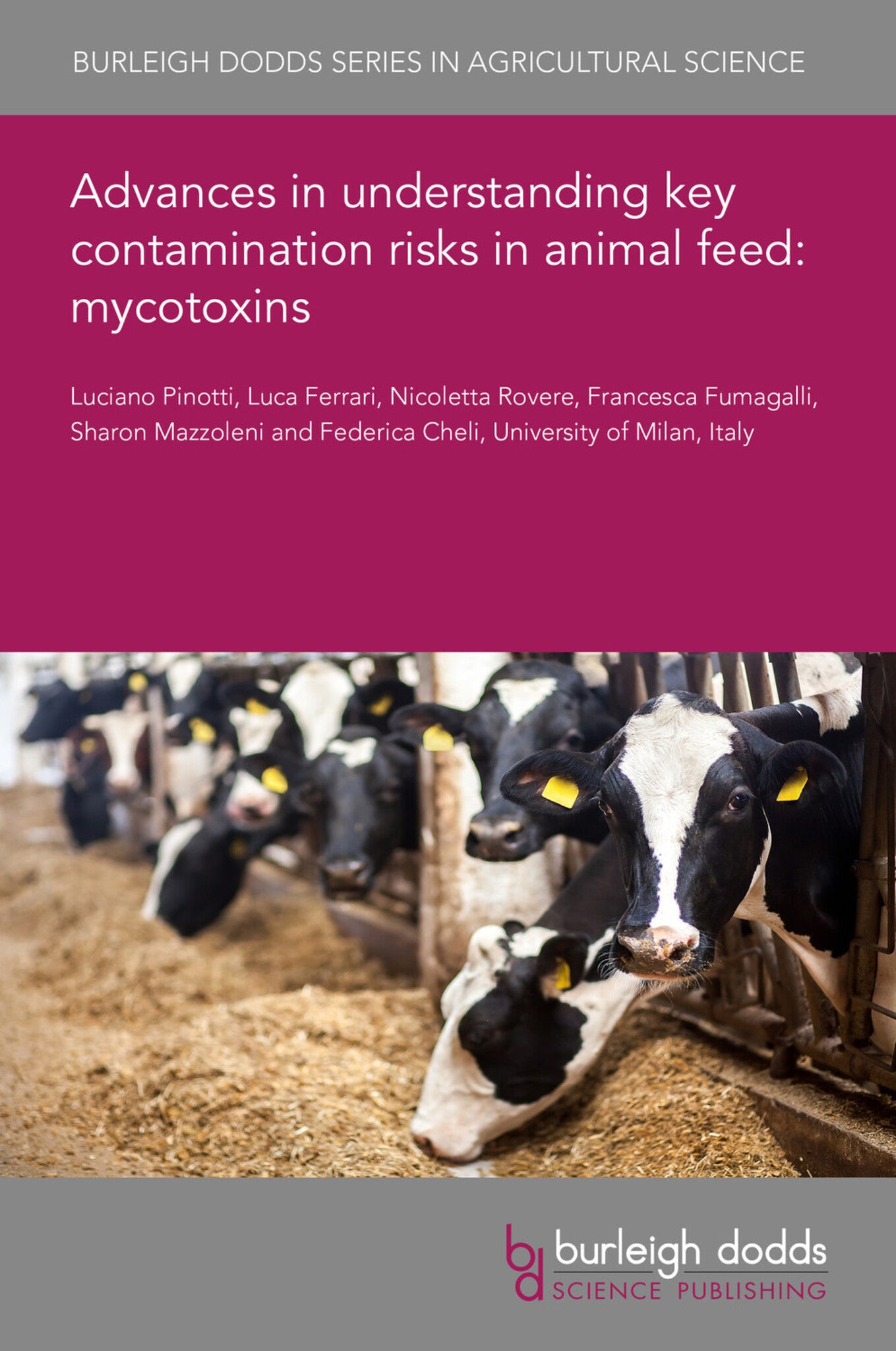We're sorry. An error has occurred
Please cancel or retry.
Advances in understanding key contamination risks in animal feed: mycotoxins
Dr luciano pinotti,
Dr luca ferrari,
Dr nicoletta rovere,
Dr francesca fumagalli,
Dr sharon mazzoleni,
View More
Dr federica cheli
Regular price
£25.00
Sale price
£25.00
Regular price
£25.00
Unit price
/
per
Sale
Sold out
Re-stocking soon
Mycotoxins are toxic secondary metabolites produced by certain filamentous fungi, especially Aspergillus, Fusarium, and Penicillium. Over 400 mycotoxins have been identified, most notably aflatoxin...
Read More

Some error occured while loading the Quick View. Please close the Quick View and try reloading the page.
Couldn't load pickup availability
- Format:
-
07 June 2021

Mycotoxins are toxic secondary metabolites produced by certain filamentous fungi, especially Aspergillus, Fusarium, and Penicillium. Over 400 mycotoxins have been identified, most notably aflatoxins, trichothecenes, zearalenone, fumonisins and ochratoxins. These low molecular weight compounds are naturally occurring and (seem to be) unavoidable. In fact, a high percentage of feed samples have been reported to be contaminated with more than one mycotoxin. Mycotoxins accumulate in corn, cereals, soybeans, sorghum, peanuts, and other food and feed crops, directly in the field or during the transportation, processing or storage stages. Consumption of mycotoxin-contaminated food or feed can lead acute or chronic toxicity in humans and animals, as well as crop losses. This chapter reviews the toxicity of the six mycotoxins, the foods they commonly contaminate, and the current methods used to detect and control of these mycotoxins.

Price: £25.00
Publisher: Burleigh Dodds Science Publishing
Imprint: Burleigh Dodds Science Publishing
Series: Burleigh Dodds Series in Agricultural Science
Publication Date:
07 June 2021
ISBN: 9781801461832
Format: eBook
BISACs:
TECHNOLOGY & ENGINEERING / Agriculture / Animal Husbandry, Animal husbandry, TECHNOLOGY & ENGINEERING / Agriculture / Sustainable Agriculture, Sustainable agriculture, Agricultural science

1 Introduction 2 Mycotoxin groups 3 Regulation of mycotoxin levels in feed 4 Levels and distribution of mycotoxin contamination in agricultural products 5 Mycotoxicosis symptoms in animals 6 Mycotoxin detection techniques 7 Mycotoxin prevention and control 8 Conclusion 9 Where to look for further information 10 References



